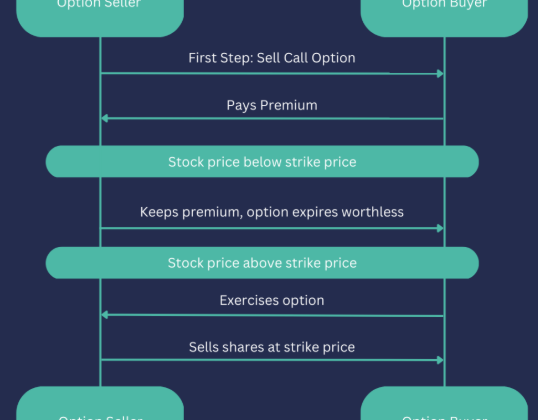Tech startups are faced with unique financial hurdles as they scale in a competitive market. While innovation and technical expertise often take center stage, the role of a Chief Financial Officer (CFO) is pivotal to a startup’s success. From managing cash flow to securing funding, CFOs offer more than just bookkeeping – they provide strategic financial leadership that can help a startup thrive. This blog explores the various ways CFOs contribute to tech startup growth, offering real-world examples and insights into their invaluable role.
The Vital Role of a CFO in a Tech Startup
CFOs bring more to the table than simply managing financial records. They act as strategic advisors, guiding startups through funding rounds, optimizing budgets, and helping forecast financial performance. Tech startups face challenges like tight cash flow, limited revenue streams, and uncertain market conditions, making it essential for them to have a seasoned CFO to navigate these complexities. By partnering with a CFO, founders can align financial strategies with their long-term vision, fostering growth and profitability in a competitive environment.
Key Financial Challenges Faced by Tech Startups
The financial landscape for tech startups is often unpredictable. Cash flow management is one of the biggest challenges, as startups frequently experience a mismatch between cash inflows and outflows. CFOs play an essential role in managing this delicate balance. They help ensure that the startup has sufficient funds to meet immediate expenses while planning for future growth opportunities.
Additionally, startups often go through multiple funding rounds, each involving its own set of financial requirements. CFOs are crucial in preparing for these rounds by ensuring the startup is financially sound, creating a compelling case for investors, and effectively managing the equity dilution and valuation process.
Managing Cash Flow Effectively
For tech startups, having a clear understanding of cash flow is crucial. With high operating costs and the need for continuous innovation, it’s easy for cash flow to become a bottleneck. CFOs use sophisticated tools to monitor cash flow and forecast future financial needs. This allows them to adjust spending, manage working capital, and ensure the company has the liquidity it needs to continue its operations and invest in growth. CFOs also help identify areas where cost optimization is possible without compromising product development or customer experience.
Navigating Funding Rounds and Attracting Investors
Securing funding is a critical part of a startup’s growth journey. CFOs are instrumental in preparing for funding rounds by creating solid financial models, projections, and investor presentations. They work closely with senior leadership to ensure that the business is appealing to potential investors, guiding the startup through the intricacies of the fundraising process. Whether it’s negotiating terms, handling due diligence, or assessing investor options, CFOs play a key role in attracting the right capital to fuel growth.
Strategic Financial Leadership for Growth
One of the most impactful roles of a CFO is providing strategic financial leadership. Beyond the numbers, a CFO offers insights into risk management, resource allocation, and long-term financial planning. By leveraging their financial expertise, CFOs help startups make sound decisions on how to allocate resources for maximum impact. They partner with management to assess opportunities, evaluate risks, and make informed decisions that will guide the startup toward achieving its goals.
Budget Optimization and Cost Control
As any startup knows, managing expenses is a constant balancing act. CFOs ensure that every dollar spent is aligned with the company’s strategic objectives. By optimizing budgets, CFOs help startups reduce wasteful spending and increase operational efficiency. This involves working closely with department heads to review budgets, track key performance indicators, and continuously improve the financial performance of the company. By maintaining tight control over costs, CFOs ensure the company remains financially viable while still pursuing growth.
Investment Strategy and Financial Planning
Developing a solid investment strategy is crucial for the future growth of a tech startup. CFOs assess market trends and potential investment opportunities to determine the best course of action for the business. Whether the focus is on expanding product offerings, entering new markets, or acquiring new technologies, CFOs provide the necessary financial insights to make these decisions. Their expertise in market analysis and risk assessment allows startups to identify the most promising opportunities for expansion.
Risk Management and Compliance Oversight
Risk management is a core responsibility for CFOs, especially in the tech industry, where the landscape is constantly evolving. CFOs help identify financial risks, create strategies to mitigate them, and ensure that the startup remains compliant with financial regulations. They establish internal controls to safeguard against fraud, ensure accurate reporting, and help the startup navigate any potential financial or operational risks that could threaten its success.
Leveraging Technology for Financial Efficiency
In today’s digital-first world, leveraging technology is key to staying competitive. CFOs help integrate cutting-edge financial technologies to streamline operations, enhance reporting accuracy, and improve decision-making. By utilizing tools such as AI-driven financial analysis software, CFOs provide real-time data and insights that enable faster and more accurate financial forecasting. This technology-driven approach not only increases efficiency but also helps startups make better, data-informed decisions.
Achieving Growth with Strategic Financial Insights
CFOs are instrumental in identifying growth opportunities by analyzing financial data and market trends. Their insights into revenue streams, customer acquisition costs, and operational performance allow tech startups to make decisions that will drive sustainable growth. CFOs also help evaluate the financial viability of new business models, products, or services, ensuring that every decision is backed by strong financial reasoning.
Identifying Expansion Opportunities
As tech startups grow, expansion often becomes a key focus. CFOs help evaluate market dynamics and identify opportunities for geographic or product-based expansion. They work with senior leadership to assess the financial feasibility of expansion plans, ensuring that funding and resources are allocated in a way that supports the startup’s long-term growth strategy. By using their expertise in financial forecasting and risk analysis, CFOs help startups expand successfully while minimizing potential financial risks.
Financial Forecasting for Long-Term Success
Financial forecasting is an ongoing process that plays a central role in the strategic planning of a startup. CFOs use historical data, industry trends, and performance metrics to predict future financial outcomes. This helps startups plan for the future by understanding potential funding needs, revenue growth, and risk factors. By providing accurate financial forecasts, CFOs ensure that startups can make proactive decisions that align with their strategic goals.
Conclusion
Tech startups need more than just bookkeeping expertise – they need strategic financial leadership to navigate the challenges of the tech world. CFOs provide this essential leadership by offering financial insights, managing risk, optimizing budgets, and driving growth strategies. Their role goes beyond traditional financial management, as they act as trusted advisors and key partners in a startup’s success. By leveraging their expertise in financial planning, forecasting, and fundraising, CFOs help tech startups thrive in a fast-paced, competitive environment.
Frequently Asked Questions
How Can a CFO Add Value to a Tech Startup?
A CFO adds value by offering financial expertise, strategic advice, and guidance on financial planning, risk management, and resource allocation.
What Role Does a CFO Play in Fundraising?
A CFO helps develop a fundraising strategy, prepares financial documents, and guides the startup through the complexities of investor negotiations.
Why is Financial Forecasting Important for Startups?
Financial forecasting helps startups plan for the future, manage resources effectively, and minimize risks, ultimately supporting long-term growth.
What Financial Metrics Should CFOs Focus on?
CFOs should focus on key metrics such as revenue growth, cash flow, customer acquisition costs, and burn rate to guide decision-making.
How Can CFOs Help with Expansion?
CFOs evaluate potential growth areas, assess financial feasibility, and ensure that funding and resources are properly allocated to support expansion efforts.

















